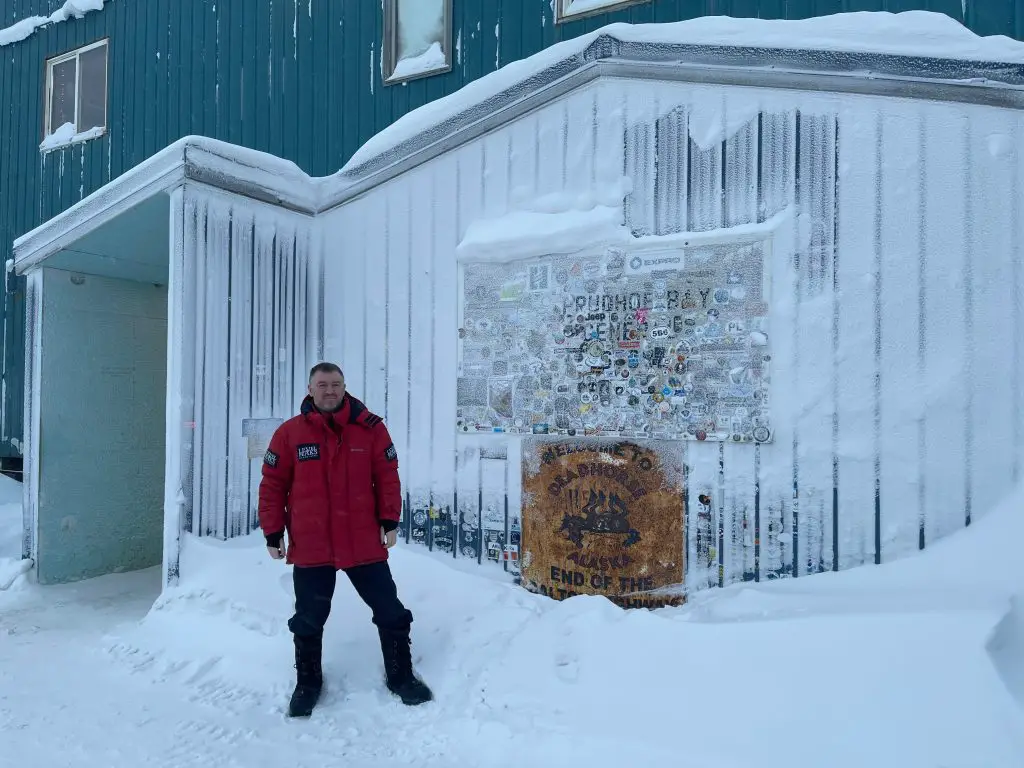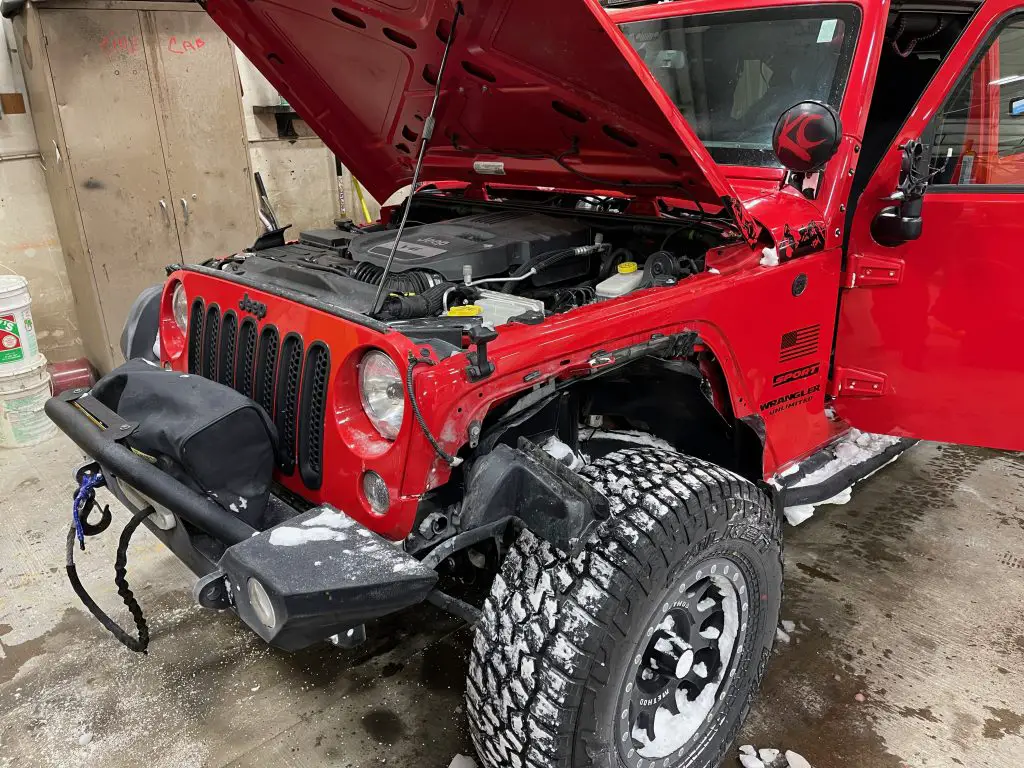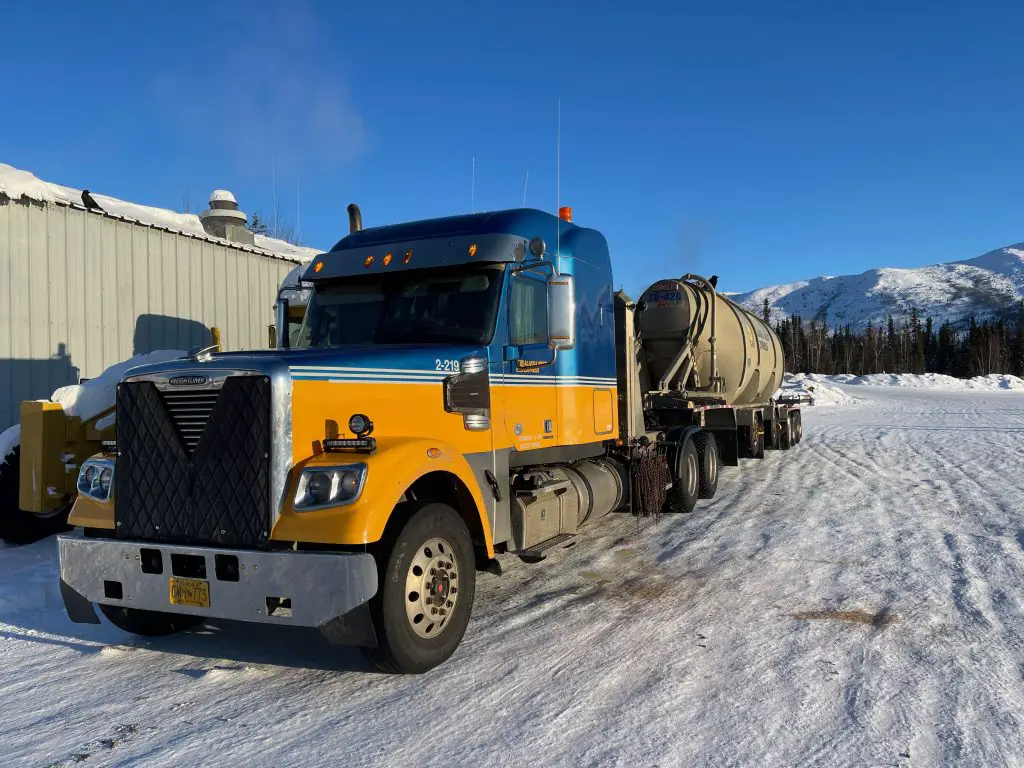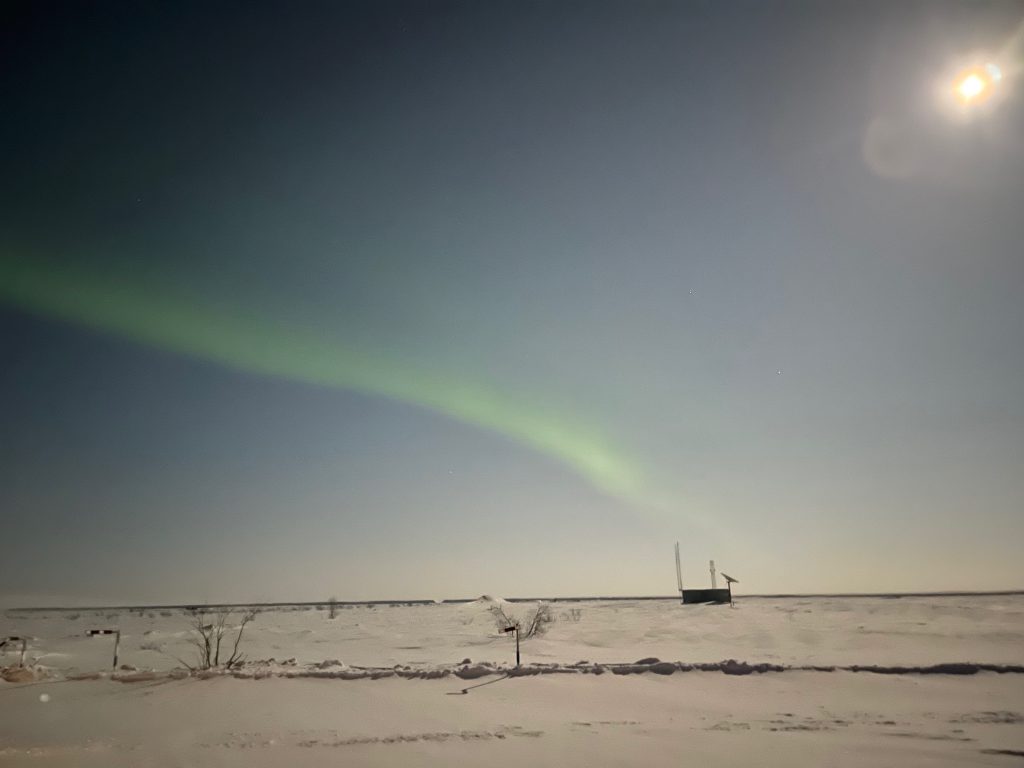Drive the Dalton Highway, Alaska’s most dangerous road
Intro
Want to drive the Dalton Highway, in winter? Here’s a little advice, and a few memories of my own journey.
The Dalton Highway, aka route 11, is a 414 mile long road that winds its way up through Alaska. Starting north of Fairbanks, the route terminates at a place called Deadhorse. And, as you’ll soon see, the many hazards make it one, if not the, most dangerous road in Alaska.
Interesting note: Deadhorse town is believed to have been named after the Deadhorse haulage company which was responsible for collecting dead horse from the area and moving tehm to a place where the corpses could be ‘processed’. What a claim to fame!

A backup journey
Before we delve into more about the journey I took along this iconic highway, I’ll explain my reasons for being there.
In February 2022, I travelled to Deadhorse with my teammate Alex. Our plan had been to ski the 600m width of the Alaskan north slope. But, sometimes, the gods who watch over expeditions decide to play a few tricks.
On the first day of the trip, a few miles outside of the town, my ski broke and we needed to get into a warm place to make repairs (on that day the temperature was -46° Celsius! No worries, my Montane Extreme kept me very warm) We turned back and were met by police officers who explained we would be crossing Native American land and unmapped oil leases. Our presence on those sites would not have been welcomed with open arms.
After fixing my ski, we decided to head south, pick up a rental vehicle and then travel back up country to a start point about 40 miles south of original.
Then COVID struck!
Both Alex and I were laid low for about 5 days in Fairbanks whilst we waited out the effects, running constang tests to ensure we tested negative.
After what felt like an age, and countless hours of watching the Winter Olympics, we set off. Our first concern was the constant low temperatures which were settled in around -40°C. As we found on the abortive first day, ue to the temperature the sleds stuck to the snow like glue and we were making less than 1km per hour (way less than when I was out training with a heavy ruck on my back) . Until the temperature lifted there was no way we could have made the distance in time.
Interesting note: one report showed the thermometers dipping to a low of -88°F (an ever so slightly nippy -66°C).
We planned to pause at various locations in Denali, then ski out to places of interest. But the routes were covered in deep, soft snow and the chance of covering any meaningful distances will slim to zero.
Hatching a new plan, we set our sights on travelling the length of the Highway, pausing to ski into the wilds. But, those no doubt angry gods had other plans.
One morning, after a pause in Coldfoot (you gotta love the place names – very appropriate) we noticed our hands and feet were getting cold fast. Way faster than usual. As ever, Google is your friend! Some quick diggins surfaced research indicating COVID affects temperature regulation, and the risk of suffering a cold injury was too high.
Instead, we settled on driving the length of Route 11 and then heading back south to drop off the Jeep in Anchorage.
And then we were involved in a crash, rolling the vehicle off the road. But the Jeep was intact and we carried on. Well, when I say “intact”, there were a few bits missing!
There were a few more minor issues along the way, such as the engine freezing and refusing to start. That ominous ‘click’ will stay with me forever! One suggestion we gave to the owner was that he fit a pan heater – a device that plugs into a mains charger and keeps the engine warm overnight.
And that’s the reason for us travelling what many Alaskans know as the haul route.
It was an interesting detour.
Route
Our route took us from Anchorage, through Fairbanks and onto the Highway. Following the road, we passed through Coldfoot (which, as you’d expect, is a really cold place in winter), a small settlement of about 34 people living 240 miles north of Fairbanks.
Interesting note: Coldfoot was named by earlier pioneers heading north to stake their claims in areas where gold had been discovered. Upon reaching the town in winter, many turned back because of cold feet.
Along the way, we passed government Department of Transport units, airfields and the odd hut.
We had hoped to arrive at the Artic Ocean, but the route weaves across areas of restricted access. So, only 8 miles from the frozen depths, we turned around and headed south to return the remnants of the Jeep to its owner.

Why is the Dalton Highway so dangerous?
As you no doubt guessed, there are many hazards lurking on the Highway. Our crash was a result of veering to avoid one of the huge transport trucks that race up and down the Highway, hitting a finger of snow and spinning off the road.
The risk of slipping off the road is high, even without the need to avoid metal behemoths. In winter the road is covered in a layer of slippery, hard packed snow and the safest mode of travel is in 4 whell drive… which drinks fuel at an eye-watering rate.
So, aside from ‘bad drivers’, what other hazards await?

Polar bears. At the time of year we were in Alaska most polar bears are hunting on the sea ice, but sometimes they come inland, like this one:
image: young polar bear hanging out near the Deadhorse runway.
Back in the 1990s, a polar bear decided to take a little walkin inland. 105 miles inland and along the Dalton Highway, to be precise. In the end, the bear got bored (well, I’m assuming it couldn’t find anything of interest) and headed back out to sea.
Another animal hazard travellers need to aware of is moose. Very cute, very large and in a constant state of ‘roid rage’, thes relatives of the European elk have been known to kill humans. Not out of malice. Well, at least I don’t think so.
One other animal hazard springs to mind – humans. Most drivers on the Highway are considerate. But every now and then you’ll run into someone who thinks that straddling the centre line is the right way to drive.
Best vehicle to drive the Dalton Highway
The best vehicle to travel the haul road is one that stays on the road! In all honesty, this is a personal choice. During our journey north, then back south, we spotted a range of vehicles includes MPVs and even an ancient Toyota Corolla. Granted, the latter had veered off the road and we stopped to drag the vehicle out of a huge snow drift (twice – we found the car in another drift about a day later!)
But if you want to complete this journey in winter I recommend you use a 4×4, or similar. The key is to have 4 wheel drive to provide the grip you’ll need on the pack snow.
Summer travel will leave you with far more choice, but you’ll need a car with air conditioing. Summer temperatures peak in the low 30s and the inside of your vehicle will start to smell ‘ripe’ in a short time. And make it a large vehicle you can sleep in if you plan to stop overnight on the route – much of the wildlife either wants to eat, or trample on, you.
When to drive the Highway
From my experience, the best time to drive the Dalton Highway is in winter. At this time, brown bears are asleep and the polar bears and on the sea ice getting fat. And, for me, nothing beats the beauty of what is a true winter wonderland.
Summer drives will pit you against bears, huge amounts of dust kicked up by vehicles and, worst of all, the nightmare of mosquitos. I prefer being cold to having litres of blood sucked out of my body.
Final thoughts
In all honesty, driving the Dalton Highway was an amazing journey and never imagined it would be such fun. Alaska is a stunning place and if you get the chance to go there you should. Without hesitation.
Go at the right time of year and you have a great chance of spotting the Northern Lights

For me there’s an element of unfinished business. The north slope defeated us this year, but the plan is to head back next year ski the 600 mile route we had planned so in-depth. My dearest hope is one of sitting here in one year’s time, writing about success.



